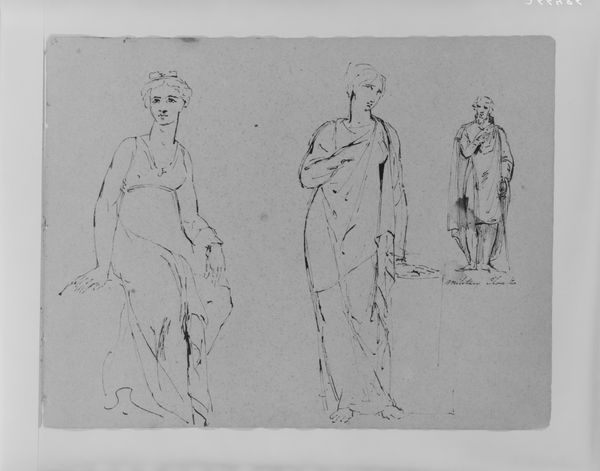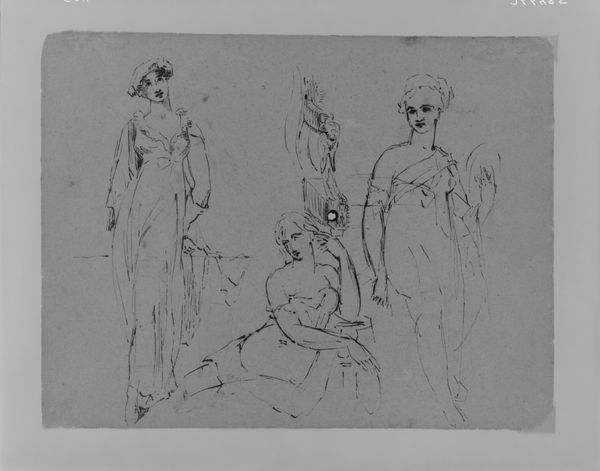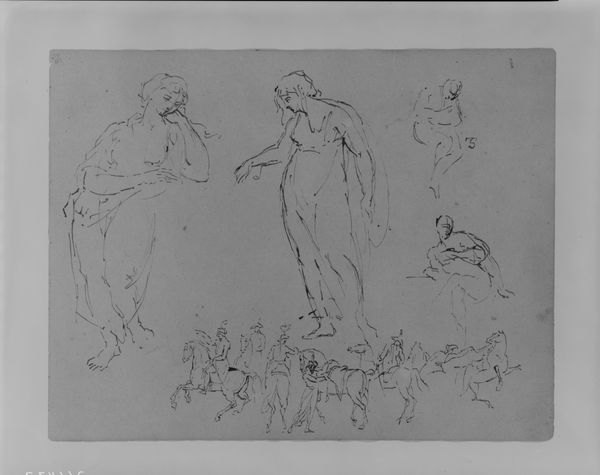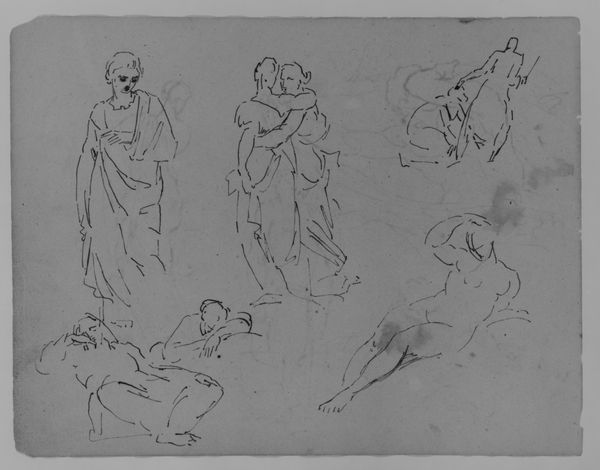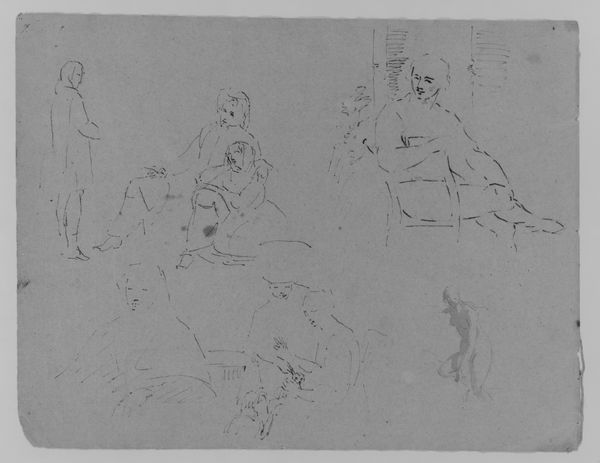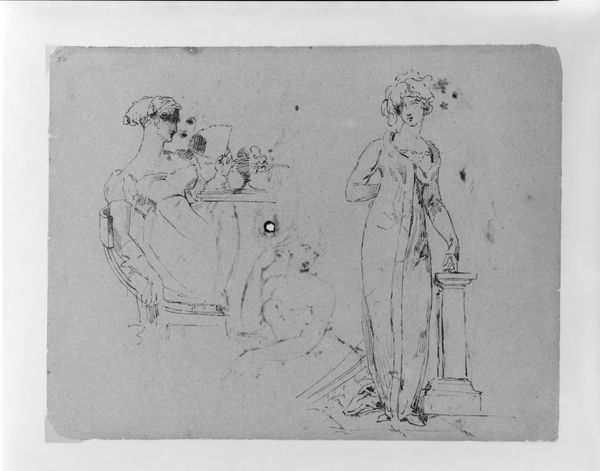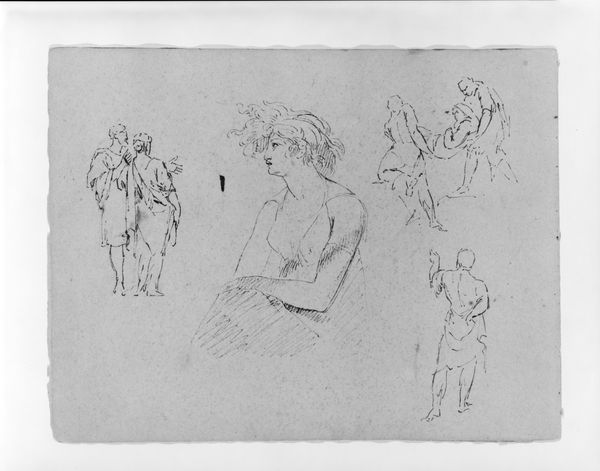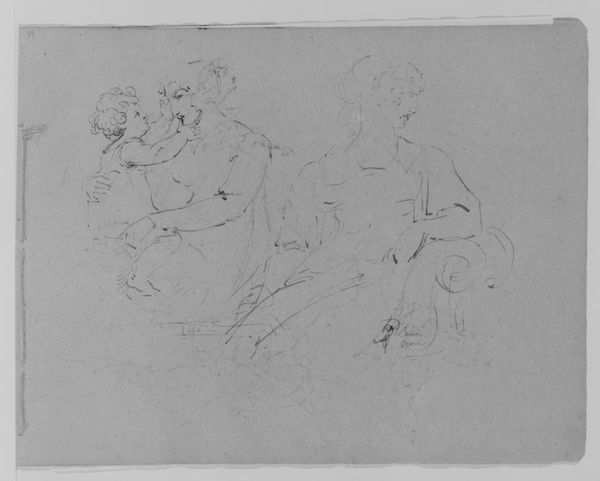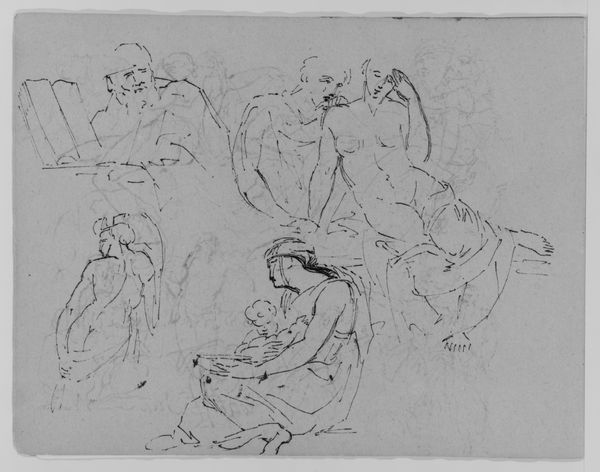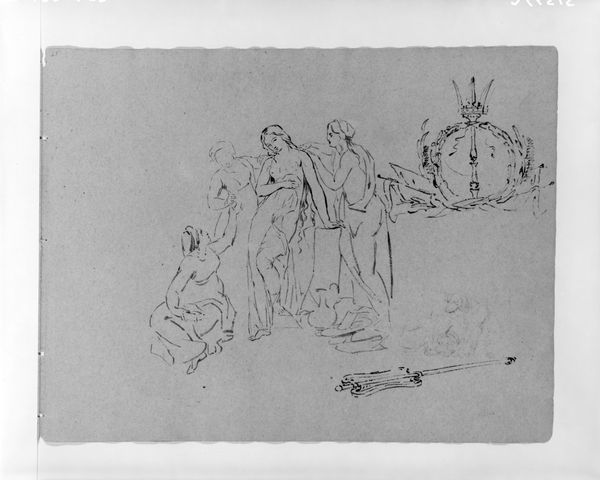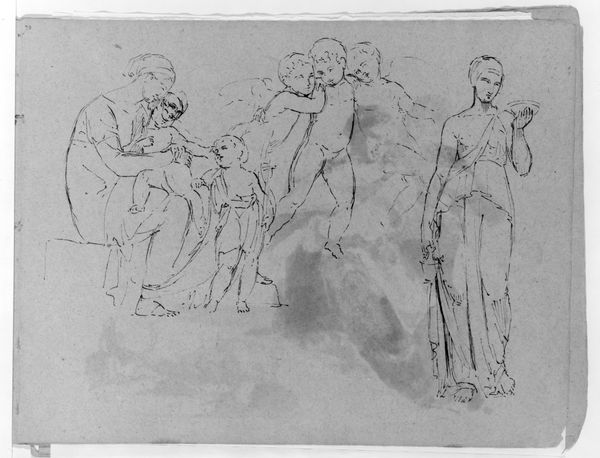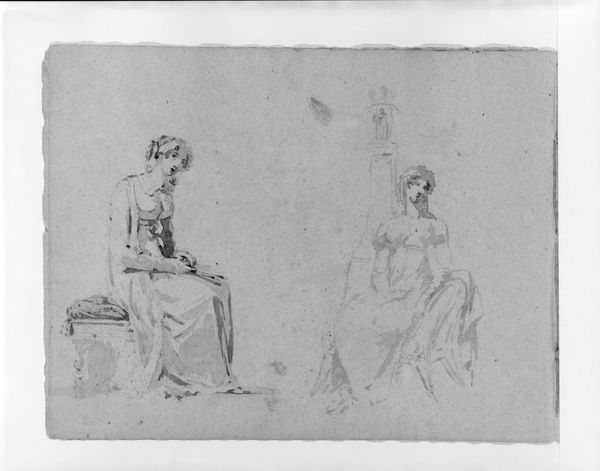
One Standing Woman; Two Seated Women in Fashionable Attire, All 3/4 Length; Two Female Heads in Bonnets (from Sketchbook) 1810 - 1820
0:00
0:00
drawing, paper, ink, pencil
#
portrait
#
drawing
#
neoclacissism
#
pencil sketch
#
figuration
#
paper
#
ink
#
group-portraits
#
pencil
#
line
#
history-painting
#
academic-art
Dimensions: 9 x 11 1/2 in. (22.9 x 29.2 cm)
Copyright: Public Domain
Curator: Immediately, I'm struck by how unfinished this feels. Almost a glimpse into the artist's process. Editor: Exactly. What we have here is a sketchbook page by Thomas Sully, dating from between 1810 and 1820. It's titled "One Standing Woman; Two Seated Women in Fashionable Attire, All 3/4 Length; Two Female Heads in Bonnets." Graphite and ink on paper. Currently housed at the Met. Curator: The "fashionable attire" definitely gives it away, doesn’t it? Look at the line work on those dresses, the delicate bonnets...it’s all about capturing the details, isn't it? What social strata did these ladies move in, I wonder. It's tempting to assume high society, given the time and location. Editor: I see these sketches as raw material for the marketplace—commissions for portraits no doubt came from studies of form and dress like these. This process unveils the mechanics of neoclassical portraiture. But don't you feel it's less about *them* and more about Sully working out form, volume, and line? Curator: I suppose you're right; they feel like mannequins adorned in status symbols more than anything. They do capture a very fleeting sense of grace though. There's a sense of airy lightness in the strokes that I really find appealing. A world about to be swept away. Do you pick up on that melancholic undercurrent? Editor: Melancholy might be your projection! I perceive his sharp economy and technical problem-solving when depicting textiles and adornments during wartime; the drawings stand as both an aesthetic endeavor and a historical record embedded within the economics of portrait production. Curator: Well, however you want to frame it in social-historical terms, there is still a charm. An echo of a lost world contained on a single sheet of paper. Editor: Ultimately, perhaps that tension between the artist's intent and our modern interpretations gives it power, wouldn’t you agree? Curator: I do. It is precisely within that intersection between the making and meaning that this piece truly lives.
Comments
No comments
Be the first to comment and join the conversation on the ultimate creative platform.
